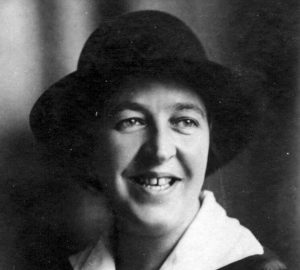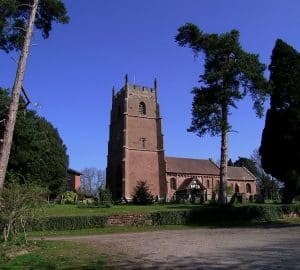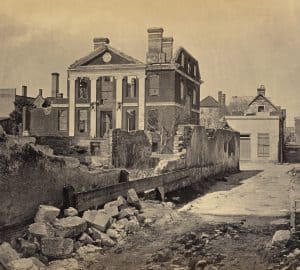
Two hundred and fifty years ago, in the rural village of Broughton, England, lived a woman named Anne Steele. You may not know her name, but it is likely that you have sung one of her hymns. They are worth knowing, and if you look in most traditional hymnals you will find her name. Of all women hymn writers, she is the first one whose hymns stood the test of time, and her hymns have strengthened, encouraged, and edified many people throughout the past two centuries.
Not many people know about her life, partly because her life was very ordinary. She did not travel. She did not have a public ministry. She did not even have a husband or children. She was just a faithful daughter, sister, aunt, and friend, who used her God-given talents to serve His people.
Anne was born in 1717 into a Baptist family. Her father, William Steele, was the pastor of a church, as his father had been before him. Sadly, Anne’s mother died in childbirth when Anne was just three years old. Anne and her older brother, also named William, were cared for by their aunt until, three years later, their father remarried and the whole family was back together once again. Mrs. Steele was a very kind stepmother who brought stability to little Anne’s childhood. Mrs. Steele gave birth to a daughter, Mary, who they called Molly. Anne and Molly eventually became very close, in spite of being seven years apart.
When Anne was 13, she suffered an attack of the measles, and from that time on her health suffered greatly. All her life she had spells of what was then called “ague,” but is now known as malaria, common in the marshy valleys of England at the time. In Mrs. Steele’s diary, she wrote that “Anne is likely to go into consumption [tuberculosis].” But thankfully for us who treasure Anne’s hymns, her frequent coughs and colds were not consumption but chronic malaria.
Mrs. Steele’s thoughts turned often to Anne’s soul. “I beg the affliction may be sanctified to her and that her life will be spared,” she wrote. Indeed, the Lord was beginning to work in Anne’s heart. One Sunday, Anne stayed back from church on a day she was especially weak. Mrs. Steele spoke with her about her soul, and found that Anne did indeed know herself to be a sinner in need of a Savior, and desired to be saved. The following summer, Anne was baptized along with her brother William. The night before, Mrs. Steele was “kept awake through a sense of God’s goodness to this child, . . . and His mercies to our family.”
Mrs. Steele saw something special in Anne, and in her diary records that she felt like the Lord had designed some work for her to do. The rest of Anne’s childhood was spent going to school, struggling with recurrent illness, and spending happy visits with different members of her extended family in the surrounding area. She possessed a cheerful disposition, in spite of her ill health, and was a kind friend to everyone that knew her.
Anne never married. When she was twenty years old, a friend and potential suitor died suddenly before a deeper friendship was formed. A few years later, another hymn writer and pastor named Benjamin Beddome sought Anne’s hand, but she politely refused, apparently preferring to remain unmarried.
Though single, Anne was not lonely. She had a loving family and many friends. She loved spending time outdoors enjoying God’s beautiful world. Her heart was wholly given to the Lord Jesus, and she was determined to use her God-given poetical talent to honor Him.
Anne began writing poetry in her youth. She lived in the time of prolific hymn writing. She was heavily influenced by Isaac Watts, who wrote so many of the time-tested hymns and Psalms that are still sung today. Other hymn writers of the time included Charles Wesley, Augustus Toplady, John Newton, William Cowper, Philip Doddridge, and many others. Anne published a book under her pen name, “Theodosia,” entitled Poems on Subjects Chiefly Devotional. Over her lifetime she wrote over 140 hymns! Her talent was not extraordinary, nor her poetry brilliant. But it is clear and understandable. Her hymns come from a deep well of sympathy with others, and her own inward experiences – joy, sorrow, doubts, fears, and trust in her Savior. She had a deep sense of her own sin, and a deep appreciation of Christ’s love and His atonement by His death on the cross – and this comes out over and over again in beautiful expression in her hymns.
He lives, the great Redeemer lives,
(What joy the blest assurance gives!)
And now before his Father, God,
Pleads the full merits of His blood.Repeated crimes awake our fears,
And justice armed with frowns appears;
But in the Saviour’s lovely face
Sweet mercy smiles, and all is peace.
Anne loved children. She treasured her nieces and nephews, spending as much time as she could with them. She published a book consisting of poems she had written for them. When her brother William lost his wife, Mary, Anne became a second mother to their only daughter Polly. For six years (until William remarried) Anne cared for Polly, taught her school and every opportunity pointed her to Jesus.
The last few years of Anne’s life were that of increasing sadness to her. Her health only continued to decline and she had many sick days. In spite of this, after her stepmother passed away, Anne had faithfully cared for her father for nine years. When he died, it was a heavy blow for Anne, who had leaned heavily on her father all her life. She wrote in her grief:
Heal, gracious Father, heal my bleeding heart!
Thy healing hand alone can bring relief . . .
How hard the lesson! (yet it must be learnt)
With full consent to say, ‘Thy will be done.’
In the few years that followed, Anne’s health became worse, her feeble frame only weakened by the sadness of her father’s death. She lost a nephew, and then her half sister Molly died suddenly at age 48. In her life, Anne had seen her mother, her step-mother, three nephews, her sister-in-law, her father, and her step-sister – as well as several dear friends – laid in the grave before her.
Polly cared for Anne in the last years of Anne’s life. The roles were reversed now. Anne was grateful for Polly’s loving hands and bright smiles to cheer her final days. Confined to her bed now, Anne endured patiently much pain and suffering. When the day came that they knew she was dying, she said, “I know that my Redeemer liveth,” and thus went to meet her Redeemer face to face.
This hymn, which has historically been her most well-known, is a beautiful summary of the life of Anne Steele:
Father, whate’er of earthly bliss
Thy sov’reign will denies,
Accepted at Thy throne of grace,
Let this petition rise:Give me a calm, a thankful heart,
From every murmur free;
The blessing of Thy grace impart,
And let me live to Thee.Let the sweet hope that Thou art mine
My life and death attend;
Thy presence thro’ my journey shine,
And crown my journey’s end.
Bibliography
A Bruised Reed by J.R. Broome




